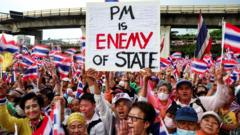In a historic decision, lawmakers in Mexico City have voted overwhelmingly to ban traditional bullfighting, permitting only non-violent variations in which no bulls are harmed, a move met with both support and opposition.
Mexico City Transition to Humane Bullfighting Reform

Mexico City Transition to Humane Bullfighting Reform
New legislation bans traditional bullfighting while allowing modified practices aimed at animal welfare.
In a landmark move, Mexico City has rendered traditional bullfighting extinct, following a vote in the local legislature that passed overwhelmingly with a margin of 61-1. This decision reflects the city's dedication to animal welfare, as lawmakers seek alternatives that allow the cultural practice to continue without causing harm to the bulls involved.
Supported by President Claudia Sheinbaum, the new legislation prohibits the injury or death of bulls, both within the arena and outside of it. Instead, the law permits what is being dubbed “bullfighting without violence,” where limitative rules dictate the duration of the bull's time in the ring and prohibit bullfighters from using any instruments other than capes.
Xochitl Bravo Espinosa, one of the legislators championing this initiative, expressed her commitment to animal welfare while emphasizing a compromise that maintains the livelihoods of those dependent on the bullfighting tradition. "We are trying to protect both the bulls and the individuals involved in the bullfighting industry," she noted, highlighting concerns for vendors and staff around La Plaza México, the largest bullfighting arena worldwide, which opened in 1946 and accommodates thousands of spectators.
However, the new legislation faced backlash from proponents of traditional bullfighting, who gathered outside the legislative building to express their discontent. In a collective statement, four bullfighting associations declared, "This is just the beginning of a fight for our bullfighting," signaling their intention to resist what they view as an encroachment on an important cultural heritage.
As debates surrounding this centuries-old practice continue, the implications of Mexico City’s decision will likely ripple across other regions, fueling discussions on animal rights and cultural preservation within the context of tradition.






















